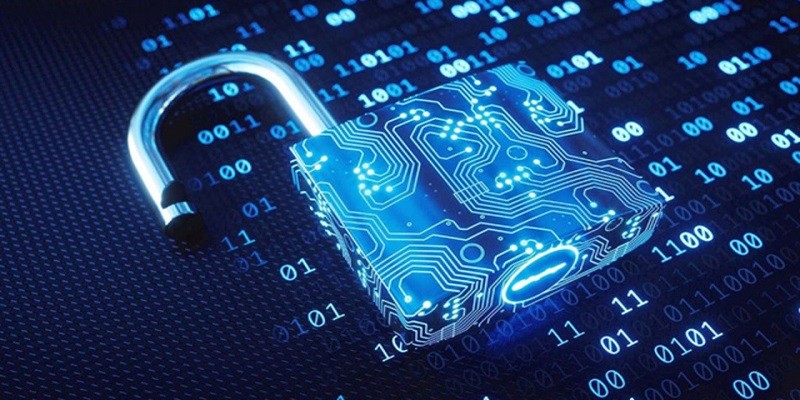Cybersecurity in the Age of IoT: Protecting Your Digital Footprint
Cybersecurity in the Age of IoT is essential for safeguarding your digital footprint and protecting against potential threats. As the Internet of Things (IoT) continues to grow, with billions of devices connected worldwide, it becomes increasingly crucial to ensure the security of your online presence.
This article will explore the importance of cybersecurity in the IoT era and provide practical tips on how to protect your digital footprint effectively. With the potential vulnerabilities posed by IoT devices, it is vital to implement robust security measures that safeguard personal information, and privacy, and prevent unauthorized access to your digital presence.
By taking proactive steps, you can minimize cybersecurity risks and maintain a secure digital footprint in the age of IoT.
Risks Of IoT Devices

The rapid proliferation of Internet of Things (IoT) devices has brought about unparalleled convenience and connectivity in our lives. However, this surge in interconnectedness has also ushered in a multitude of security risks that threaten the protection of our digital footprint. From data breaches to unauthorized access, the vulnerabilities associated with IoT devices demand a comprehensive understanding and proactive measures to safeguard against potential threats.
Read More – The New Frontier: Exploring the Potential of Space Tourism
Data Breaches
Data breaches pose a significant risk in the realm of IoT devices, as these interconnected tools are entrusted with a myriad of sensitive personal information. In the event of a breach, this data may fall into the wrong hands, leading to identity theft, financial fraud, or other nefarious activities. The interconnected nature of IoT ecosystems also amplifies the impact of a breach, potentially compromising an entire network.
Unauthorized Access
Unauthorized access to IoT devices can pave the way for malicious actors to infiltrate and manipulate connected systems. Inadequately secured devices may serve as entry points for cybercriminals, granting them unrestricted access to personal information, home automation controls, and even vital infrastructure. This unauthorized access not only compromises privacy but also jeopardizes the safety and security of individuals and organizations.
Importance Of Cybersecurity Measures
The increasing interconnectedness of devices in the age of IoT has opened up new avenues for cybercriminals to exploit vulnerabilities and gain unauthorized access to sensitive information. As such, it has become more crucial than ever to prioritize cybersecurity measures to protect your digital footprint.
Protecting Sensitive Information
Today, individuals and businesses store extensive amounts of sensitive information online. This includes personal details, financial data, and confidential business information. It is essential to implement strong cybersecurity measures to safeguard this data from falling into the wrong hands.
- Use strong, unique passwords for every online account, and consider utilizing password management software to keep track of them securely.
- Enable two-factor authentication wherever possible to add an extra layer of security to your accounts.
- Regularly update your software and devices to ensure they have the latest security patches installed, as these updates often address known vulnerabilities.
Read More – AI in Healthcare: Transforming Patient Care And Medical Research
Ensuring Data Integrity
Data integrity refers to the accuracy and consistency of information over its entire lifecycle. Protecting the integrity of data is crucial in maintaining trust and ensuring that information remains unaltered and reliable.
- Implement data backups to prevent the loss of critical information due to data breaches or other incidents.
- Use encryption technologies to secure data both at rest and in transit, making it difficult for unauthorized individuals to decipher.
- Regularly monitor your systems for any signs of suspicious activity or unauthorized access, and promptly investigate and address these issues.
By taking proactive cybersecurity measures to protect your digital footprint, you can enhance the privacy and security of your sensitive information. Stay one step ahead of cybercriminals and establish a strong defense against potential threats in the ever-evolving landscape of IoT.
Common Cybersecurity Threats
As the Internet of Things (IoT) continues to expand and connect our devices, it brings countless benefits and opportunities. However, it also opens the door to various cybersecurity threats. Knowing about these threats is crucial to protect your digital footprint. Let’s explore the most common cybersecurity threats:
Malware Attacks
Malware attacks are among the most prevalent threats in today’s digital landscape. Malicious software, or malware, refers to a type of software designed to damage, infiltrate, or gain unauthorized access to computer systems. It comes in various forms, such as viruses, worms, trojans, ransomware, and spyware. These attacks can result in data breaches, financial loss, identity theft, and disruption of operations.
Malware often enters devices or networks through unsuspecting individuals who accidentally download infected files or click on malicious links. It can spread through email attachments, social media messages, or compromised websites. Once inside a system, malware can corrupt files, steal sensitive information, or even control the infected devices.
Protecting yourself against malware attacks requires proactive measures. Here are some essential steps you can take:
- Keep your software and operating systems up to date to minimize vulnerabilities.
- Install a reliable antivirus software that provides real-time protection against malware.
- Avoid clicking on suspicious links or downloading files from untrusted sources.
- Regularly backup your important files to reduce the impact of potential ransomware attacks.
Read More – The Rise of Quantum Computing: Breaking Down the Complexities
Phishing Scams
Phishing scams involve tricking individuals into revealing sensitive information, such as usernames, passwords, or financial details, by disguising them as trustworthy entities. These scams often occur via emails, text messages, or phone calls that appear legitimate. By imitating reputable organizations or individuals, cybercriminals aim to deceive their victims into sharing confidential data.
Phishing attacks can have severe consequences, including identity theft, financial loss, and compromised online accounts. Cybercriminals continually develop new ways to craft convincing phishing messages that bypass common security measures.
To protect yourself from falling victim to phishing scams, follow these best practices:
- Be cautious of unexpected or unsolicited messages asking for personal information.
- Verify the legitimacy of email senders, especially if they request sensitive data.
- Avoid clicking on links within emails or text messages unless you are certain of their authenticity.
- Use strong, unique passwords for all your online accounts, and consider using two-factor authentication.
Awareness and vigilance are key to preventing phishing attacks. By staying alert and implementing these preventive measures, you can significantly reduce the risk of falling victim to these scams.
Best Practices For Securing IoT Devices
Protecting your digital footprint in the age of IoT requires implementing best practices for securing IoT devices. In a world where devices are increasingly interconnected, ensuring the security of these devices is crucial to safeguarding your personal and business data.
Regular Software Updates
Regular software updates are crucial to minimizing security vulnerabilities in IoT devices. By ensuring that devices are running the latest firmware and software, you can protect them from known exploits and weaknesses. Consistently updating your devices’ software helps to mitigate the risk of unauthorized access and enhances the overall security of your IoT ecosystem.
Strong Password Policies
Implementing strong password policies for IoT devices is imperative in fortifying their security. Creating complex and unique passwords for each device and regularly changing them significantly reduces the risk of unauthorized access. Enforcing the use of multi-factor authentication further strengthens the security posture of IoT devices and safeguards them against potential breaches.
Frequently Asked Questions
How Can IoT Devices Be Secured Effectively?
IoT devices can be secured through encryption, regular updates, strong passwords, and network segmentation.
What Are The Common Cybersecurity Threats In IoT?
Common threats include malware attacks, data breaches, DDoS attacks, insecure devices, and unsecured networks.
Why Is Protecting Your Digital Footprint Crucial?
Protecting your digital footprint is vital to safeguard personal information, prevent identity theft, and maintain online privacy.
How Can Individuals Strengthen Their Cybersecurity Posture?
Individuals can enhance cybersecurity by using multi-factor authentication, avoiding public Wi-Fi, updating software, and staying vigilant.
What Role Do Cybersecurity Measures Play In IoT Security?
Cybersecurity measures are essential for IoT security by protecting data, preventing unauthorized access, and ensuring safe device operation.
Conclusion
As we navigate the digital landscape, safeguarding our IoT devices is crucial. By implementing robust cybersecurity measures, we can protect our digital footprint from potential threats. Stay informed about the latest security trends and take proactive steps to fortify your digital presence.
Together, let’s forge a safer and more secure online world.

